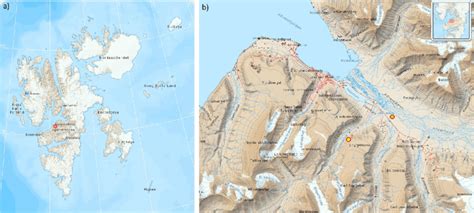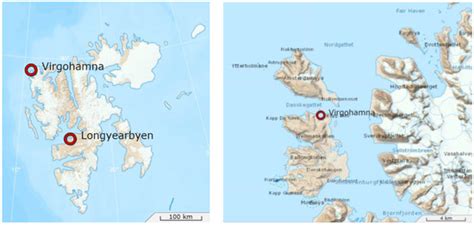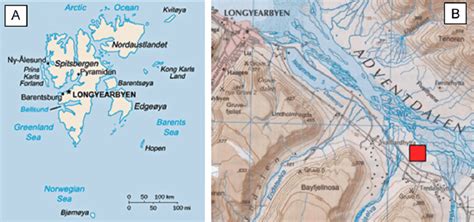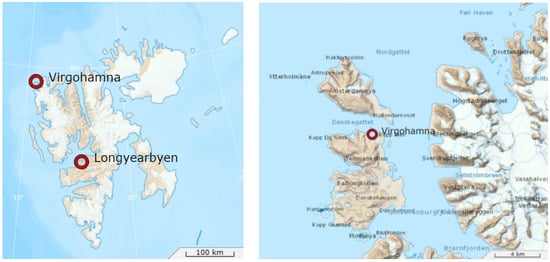Cultural Resource Management (CRM) plays a crucial role in preserving the diverse heritage of our world, ensuring that future generations can connect with their history and traditions. As globalization and development intensify, the challenges of safeguarding cultural assets grow more complex. In this article, we explore the definition and significance of CRM, delve into the obstacles faced by preservation efforts, and examine the innovative strategies and technologies employed to overcome them. Through insightful interviews and case studies, we highlight the success stories in CRM and the vital role of community involvement, while also looking ahead to future trends and develop
Discover the intricacies of this topic with ritarblog.com
1. Definition and Importance of Cultural Resource Management (CRM)
Cultural Resource Management (CRM) is a professional field focused on safeguarding cultural heritage resources, such as historical sites, artifacts, architecture, and landscapes. This multidisciplinary practice draws upon archaeology, history, architecture, anthropology, and other fields to ensure the protection of these valuable cultural assets for future generations. The significance of CRM is particularly pronounced in the context of development and urbanization, where construction projects and changes in land use can pose risks to cultural sites.
The importance of CRM lies in its ability to balance progress with preservation. By documenting and managing cultural resources, CRM ensures that development does not come at the cost of losing irreplaceable heritage. This not only helps maintain cultural diversity and historical continuity but also supports education, tourism, and community identity. Effective CRM practices can foster a deeper understanding of human history and contribute to the social and economic vitality of regions by protecting the unique characteristics that define them.

2. Challenges Faced in Preserving Cultural Heritage
Protecting cultural heritage faces many challenges that require a careful balance between progress and preservation. One of the most pressing issues is the rapid growth of cities and infrastructure, which often puts historic sites and artifacts in danger. As urban areas expand, the risk of harming or losing these cultural treasures increases, making swift and cautious action by Cultural Resource Management (CRM) experts essential.
A significant obstacle to effective preservation stems from the scarcity of funding and resources. Many cultural heritage sites, especially in developing regions, face neglect due to limited financial support, hindering their maintenance and protection. Moreover, political instability and conflict in some areas pose serious threats to cultural heritage. Sites may be deliberately targeted or suffer collateral damage during warfare, further jeopardizing their preservation.
Navigating legal frameworks and acquiring the necessary permits for preservation work presents significant challenges. Each country’s unique regulations and procedures can lead to bureaucratic obstacles, impeding the progress of preservation efforts. Furthermore, a lack of public awareness and engagement in cultural preservation compounds these difficulties. Without community support and participation, preservation initiatives may struggle to gain the momentum required for success.
Overcoming these challenges demands a comprehensive strategy encompassing advocacy, education, collaborative efforts, and the integration of cutting-edge technologies. This multi-pronged approach aims to guarantee the preservation of cultural heritage for posterity.

3. Strategies and Best Practices in CRM
Effective strategies and best practices in Cultural Resource Management (CRM) are essential for overcoming the challenges of preserving cultural heritage. One key approach is early and proactive planning, where CRM professionals collaborate with developers, government agencies, and local communities to identify and assess cultural resources before construction or development begins. This ensures that potential impacts are mitigated or avoided entirely.
Integrating advanced technologies, such as Geographic Information Systems (GIS) and 3D scanning, allows for more precise mapping and documentation of cultural sites. These tools not only enhance preservation efforts but also facilitate virtual access, enabling broader public engagement and education.
Community involvement is another crucial strategy. By actively engaging local communities in the preservation process, CRM initiatives can foster a sense of ownership and pride, which in turn strengthens conservation efforts. Training and capacity-building programs for local stakeholders ensure that they have the skills and knowledge needed to protect their cultural heritage.
Adherence to international standards and ethical guidelines, such as those set by UNESCO, further ensures that CRM practices are conducted responsibly and sustainably, safeguarding cultural heritage for future generations.

4. Role of Technology in Enhancing CRM Efforts
Technology is a vital force in elevating Cultural Resource Management (CRM) practices, providing cutting-edge solutions to safeguard and conserve cultural heritage. Among the most influential technological developments is the use of Geographic Information Systems (GIS) for mapping and monitoring cultural sites. GIS empowers CRM professionals to meticulously record the location and state of heritage sites, enabling more effective planning and decision-making.
3D scanning and modeling are transforming the field by creating detailed digital replicas of artifacts, structures, and entire sites. These digital models allow experts to analyze and study cultural resources without physically touching them, minimizing the risk of damage. Moreover, they serve as a valuable tool for virtual reconstruction, enabling the public to experience and explore heritage sites remotely.
Drones and aerial photography offer a valuable support layer by capturing high-resolution images of extensive or inaccessible areas. These images facilitate surveying sites, detecting potential threats, and monitoring changes over time.
The use of Artificial Intelligence (AI) and machine learning is growing in the analysis of extensive datasets pertaining to cultural resources. These technologies possess the ability to detect patterns, anticipate risks, and recommend conservation strategies that might elude traditional methods.
By integrating these advanced technologies, CRM efforts are becoming more efficient, precise, and inclusive, ensuring that cultural heritage is preserved in a way that honors its significance and extends its accessibility to future generations.
5. Case Studies and Success Stories in CRM
Cultural Resource Management (CRM) boasts a compelling track record of successful preservation initiatives. A prime example is the safeguarding of the ancient city of Petra in Jordan. Designated a UNESCO World Heritage Site, Petra faced challenges from tourism and natural erosion. CRM professionals, utilizing advanced GIS mapping, 3D scanning, and collaborative efforts with the local community, crafted a comprehensive conservation plan that effectively addressed these threats while simultaneously enhancing visitor experiences.
The restoration of the Great Wall of China stands as a testament to successful cultural resource management. Sections of the Wall, weakened by weathering and years of neglect, were meticulously assessed using drones and aerial photography. CRM teams then implemented restoration work, adhering to the original construction methods, ensuring the preservation of this vital piece of global heritage. This project not only safeguarded the Wall but also revitalized local tourism, demonstrating the positive impact of responsible cultural resource management.
In the United States, the preservation of Native American cultural sites on public lands has been another CRM triumph. Collaborations between federal agencies, tribal governments, and CRM experts have led to the protection and restoration of sacred sites, ensuring that these culturally significant locations are maintained for future generations.
These case studies demonstrate the power of CRM in preserving cultural heritage, showcasing how innovative strategies and community involvement can lead to successful conservation outcomes that b
6. The Impact of Community Involvement in CRM
Community involvement is a cornerstone of effective Cultural Resource Management (CRM), providing essential support and insight that enhances preservation efforts. When local communities are actively engaged in CRM projects, they bring valuable knowledge of the cultural significance of sites and artifacts, ensuring that preservation strategies are both culturally sensitive and contextually appropriate.
One of the most significant impacts of community involvement is the fostering of a sense of ownership and responsibility among residents. When people feel connected to their heritage, they are more likely to support and participate in preservation efforts, leading to stronger and more sustainable outcomes. This local engagement also helps in identifying and mitigating potential threats to cultural sites that might be overlooked by external experts.
Community-driven CRM projects often lead to innovative solutions tailored to the unique needs and challenges of specific regions. For example, in many indigenous communities, traditional practices and knowledge are integrated into CRM efforts, resulting in more holistic and respectful preservation methods.
Furthermore, involving communities in CRM promotes cultural pride and awareness, strengthening the social fabric and ensuring that cultural heritage remains a living part of daily life. Ultimately, community involvement not only enhances the effectiveness of CRM but also empowers people to protect and celebrate their own cultural legacy.
7. Future Trends and Developments in CRM
The future of Cultural Resource Management (CRM) is poised to be significantly influenced by several emerging trends and developments. A key trend is the growing integration of advanced technologies, such as augmented reality (AR) and virtual reality (VR). These technologies offer immersive experiences for both professionals and the public. By enabling virtual tours and interactive reconstructions of cultural sites, AR and VR enhance educational opportunities and foster public engagement.
A noteworthy trend in CRM is the rising focus on sustainability. As environmental issues gain greater urgency, CRM strategies are incorporating eco-conscious practices to lessen the environmental impact of preservation efforts.
Collaboration across disciplines is increasingly prevalent, with CRM professionals joining forces with archaeologists, historians, and urban planners to develop more comprehensive preservation plans. This interdisciplinary approach proves invaluable in tackling the complex challenges associated with managing cultural resources in a rapidly evolving world.
Finally, a growing emphasis is placed on community-driven CRM initiatives. Recognizing the crucial role of local involvement in successful preservation, future CRM practices will likely continue to prioritize and expand community engagement, guaranteeing that cultural heritage is safeguarded for generations to come.
Cultural Resource Management is vital for preserving our global heritage amidst modern challenges. By integrating advanced technologies, fostering community involvement, and embracing sustainable practices, CRM efforts can effectively safeguard cultural sites and traditions. As we look to the future, continued innovation and collaboration will ensure that our shared history remains protected and accessible for generations to come.
ritarblog.com

